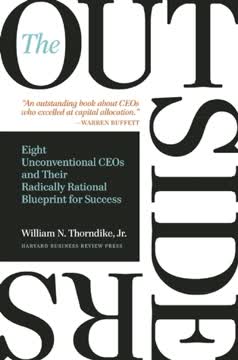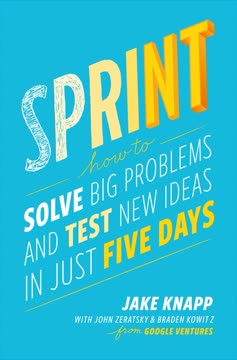Key Takeaways
1. Dual-career couples face three major transitions in their lives
"I discovered that dual-career couples faced three transitions during their working lives. Each required couples to face different challenges, and each, if well navigated, renewed their relationship and took it to a deeper level."
Three major transitions. Dual-career couples navigate three significant life transitions:
- First transition (typically in 20s-30s): Moving from independent to interdependent lives
- Second transition (typically in 40s): Questioning and redefining personal and professional goals
- Third transition (typically in 50s and beyond): Reinventing themselves for the final career stage
Each transition presents unique challenges and opportunities for growth, both individually and as a couple. Successfully navigating these transitions can lead to a stronger, more fulfilling relationship and career satisfaction for both partners.
2. The first transition: Achieving interdependence in careers and family
"How can we make this work?"
Balancing careers and family. The first transition revolves around accommodating major life events, such as career opportunities or starting a family. Couples must:
- Negotiate career prioritization (e.g., primary-secondary, turn-taking, or double-primary models)
- Divide family commitments
- Create a joint path that allows both partners to thrive
Key strategies for success:
- Open communication about values, boundaries, and fears
- Deliberate decision-making
- Flexibility in adjusting plans as circumstances change
3. The second transition: Discovering what you really want in life and work
"What do we really want?"
Reassessing goals and identities. The second transition involves questioning established patterns and re-evaluating personal and professional aspirations. Couples must:
- Shift focus from adapting to social expectations to identifying individual desires
- Support each other's exploration and growth
- Renegotiate roles within the relationship
This transition often involves:
- Periods of uncertainty and soul-searching
- Potential career changes or pivots
- Redefining the relationship dynamic
4. The third transition: Reinventing yourselves for the final career stage
"Who are we now?"
Embracing new identities. The third transition occurs as couples approach the later stages of their careers and face significant role shifts. Key aspects include:
- Dealing with career plateaus and changing professional identities
- Adjusting to empty nest syndrome and evolving parental roles
- Exploring new passions and interests beyond work and family
Couples must:
- Reassess their identities individually and as a unit
- Find new sources of meaning and purpose
- Plan for the next chapter of their lives together
5. Communication and deliberate decision-making are crucial for success
"Couples that work figure out the answer to this defining question deliberately, together."
Open dialogue and joint decisions. Successful dual-career couples prioritize:
- Regular, honest communication about goals, fears, and challenges
- Shared decision-making processes for major life choices
- Proactive planning for future transitions and potential obstacles
Strategies for effective communication:
- Practice active listening and empathy
- Avoid criticism, contempt, defensiveness, and stonewalling
- Foster a growth mindset in the relationship
6. Shared passions strengthen relationships beyond careers and family
"Many of the couples I have spoken to have a huge variety of shared passions, from playing in a music band together, to running a scout group, to sailing, to renovating and reselling houses."
Bonding through shared interests. Couples who cultivate shared passions outside of work and family responsibilities often have stronger, more resilient relationships. Benefits include:
- Creating a unique identity as a couple
- Providing a buffer against career and family stressors
- Maintaining connection and intimacy throughout life transitions
Examples of shared passions:
- Creative pursuits (e.g., music, art, writing)
- Physical activities (e.g., sports, hiking, dance)
- Community involvement (e.g., volunteering, activism)
7. Couples must rebalance roles and expectations throughout their journey
"The second transition is thus triggered by a combination of two forces—the drive to individuate that is part of the life cycle and the need to tackle the division of roles within a couple that is a consequence of the first transition."
Adapting to change. Throughout their journey, couples must:
- Regularly reassess and adjust their roles within the relationship
- Balance individual growth with the needs of the partnership
- Remain flexible in the face of changing circumstances and priorities
Key areas for rebalancing:
- Career prioritization and support
- Division of household and family responsibilities
- Personal time and space for individual pursuits
8. Late love and gray divorce: New trends in dual-career relationships
"The rise of so-called gray divorces has been well documented. In the United States alone, the divorce rate has doubled in the over-fifties since the 1990s."
Changing relationship dynamics. Two emerging trends in dual-career relationships:
- Late love: Finding new partnerships later in life, often after previous marriages
- Gray divorce: Increasing rates of divorce among older couples
Factors contributing to these trends:
- Longer life expectancies and healthier aging
- Financial independence, especially for women
- Desire for personal fulfillment and growth in later years
9. Embracing change and exploration leads to personal and professional growth
"To overcome the pull of speed and productivity, you must enter liminality with acceptance—acceptance that the process will take time and acceptance that your most important tool is your ability to make sense of the experiences you have within liminality."
Growth through uncertainty. Embracing change and exploring new possibilities can lead to significant personal and professional development. Key aspects:
- Accepting periods of uncertainty and transition as opportunities for growth
- Engaging in self-reflection and exploration of new interests
- Allowing time for the process of change and self-discovery
Strategies for embracing change:
- Seek out new experiences and learning opportunities
- Practice mindfulness and self-awareness
- Support your partner's growth and exploration
10. Successful couples invest in each other's development and well-being
"We want them to be committed not only to us, but also to our development and to our potential."
Mutual support and growth. Thriving dual-career couples:
- Actively support each other's personal and professional development
- Encourage exploration of new interests and passions
- Celebrate each other's successes and provide comfort during setbacks
Ways to invest in your partner's growth:
- Offer emotional support and encouragement
- Provide practical assistance (e.g., time, resources) for pursuing goals
- Show genuine interest in your partner's aspirations and challenges
By prioritizing each other's well-being and growth, couples can build stronger, more resilient relationships that weather the challenges of dual-career life.
Last updated:
FAQ
What's "Couples That Work" about?
- Dual-career focus: "Couples That Work" by Jennifer Petriglieri explores the dynamics and challenges faced by dual-career couples, offering insights into how they can thrive both in their professional and personal lives.
- Three transitions: The book is structured around three key transitions that dual-career couples typically experience, each requiring different strategies and adjustments.
- Real-life stories: Petriglieri uses real-life stories from over a hundred couples to illustrate common challenges and solutions, making the book relatable and practical.
- Guidance and tools: It provides practical tools and exercises to help couples navigate their careers and relationships more effectively.
Why should I read "Couples That Work"?
- Practical advice: The book offers actionable advice for dual-career couples looking to balance their professional ambitions with their personal relationships.
- Research-based insights: It is grounded in extensive research, providing evidence-based strategies for managing the complexities of dual-career life.
- Relatable stories: The real-life examples make the challenges and solutions more tangible and relatable for readers.
- Long-term success: It focuses on helping couples achieve long-term success and fulfillment in both their careers and relationships.
What are the key takeaways of "Couples That Work"?
- Three transitions: Understanding and navigating the three key transitions—interdependence, individuation, and identity—are crucial for dual-career couples.
- Deliberate choices: Couples should make deliberate choices about career prioritization and parenting models to avoid conflicts and ensure mutual support.
- Role rebalancing: Rebalancing psychological roles within the relationship is essential for personal growth and relationship satisfaction.
- Shared passions: Developing shared passions outside of work and family can strengthen the couple's bond and provide a sense of unity.
What are the best quotes from "Couples That Work" and what do they mean?
- "The most important career decision you will make is who you marry." This quote emphasizes the significant impact a partner can have on one's career trajectory and personal fulfillment.
- "There is no such thing as the perfect dual-career couple—life is too complex and unpredictable for that." It highlights the importance of flexibility and adaptability in managing dual careers.
- "Understanding the challenges ahead, the transitions you will face, and the tools for communication, problem solving, negotiation, and mutual support can increase your chances not just of surviving, but also of thriving." This underscores the book's focus on proactive strategies for success.
- "Couples that work approach the challenges of being in a dual-career couple as an art." It suggests that managing dual careers requires creativity, effort, and continuous improvement.
What is the "Three Transitions" model in "Couples That Work"?
- Transition One - Interdependence: Couples move from having parallel, independent careers to interdependent ones, requiring them to negotiate career prioritization and family commitments.
- Transition Two - Individuation: This involves shifting focus from conforming to external demands to identifying and pursuing personal desires and goals within the relationship.
- Transition Three - Identity: Couples face role shifts and identity voids, prompting them to reassess their past and reimagine their future together.
- Developmental tasks: Each transition involves specific developmental tasks that couples must navigate to maintain a thriving relationship.
How does "Couple Contracting" work in "Couples That Work"?
- Values, boundaries, fears: Couple contracting involves in-depth discussions about values, boundaries, and fears to align partners' expectations and priorities.
- Deliberate choices: It encourages couples to make deliberate choices about their careers and relationship, reducing uncertainty and easing decision-making.
- Ongoing process: The process is not static; couples are encouraged to revisit their contracts regularly, especially during major life transitions.
- Strengthens relationship: By fostering open communication and mutual understanding, couple contracting strengthens the relationship and helps prevent conflicts.
What is the "Independence Trap" in "Couples That Work"?
- Independent careers: Couples often start with independent careers, leading to a focus on practical issues and trade-offs rather than deeper collaboration.
- Zero-sum game: This approach can create a zero-sum game where one partner's gain is the other's loss, breeding resentment and conflict.
- Interdependence: To avoid this trap, couples need to embrace interdependence, collaborating on career prioritization and life structure.
- Deeper forces: Addressing deeper psychological and social forces is crucial for moving beyond surface-level compromises.
How does "Role Rebalancing" help in "Couples That Work"?
- Psychological roles: Couples often settle into psychological roles that can become constraining over time, leading to dissatisfaction.
- Rebalancing roles: Rebalancing involves reclaiming underdeveloped aspects of oneself and sharing roles more equitably within the relationship.
- Personal growth: This process supports personal growth and helps partners become more psychologically whole.
- Mutual support: Successful role rebalancing requires mutual support and understanding, fostering a stronger, more fulfilling relationship.
What is "Developmental Freezing" in "Couples That Work"?
- Stuck in roles: Developmental freezing occurs when couples become stuck in roles that no longer align with their interests and desires.
- Asymmetric support: It often results from an asymmetric secure base relationship, where one partner supports the other without reciprocity.
- Resentment and stagnation: This can lead to resentment, relationship deterioration, and a frozen path that hinders personal and relational growth.
- Avoiding freezing: Building a mutual secure base relationship and supporting each other's individuation can prevent developmental freezing.
How do "Shared Passions" benefit couples in "Couples That Work"?
- Joint interests: Shared passions are activities or interests that couples engage in together, separate from work and family responsibilities.
- Strengthens bond: They provide a space for couples to connect and strengthen their bond, maintaining a sense of "we."
- Prepares for transitions: Having shared passions can help couples navigate transitions, especially when children leave home or careers plateau.
- Long-term investment: Developing shared passions before major life changes can anchor the relationship and provide continuity.
What is the "Michelangelo Phenomenon" in "Couples That Work"?
- Self-development: The Michelangelo phenomenon refers to the expectation that partners will help each other reach their full potential.
- Beyond support: It goes beyond providing support, involving active encouragement and investment in each other's personal growth.
- Relationship satisfaction: Couples who engage in this phenomenon tend to have more satisfying and fulfilling relationships.
- Continuous effort: It requires continuous effort and attention to each other's developmental journey, fostering a deeper connection.
How does "Couples That Work" redefine success for dual-career couples?
- Beyond career success: Success is not just about career achievements but also about thriving in the relationship and personal fulfillment.
- Deliberate choices: Making deliberate choices about career prioritization, parenting, and relationship roles is key to achieving success.
- Balancing love and work: The book emphasizes the importance of balancing love and work, treating both as vital components of life.
- Art of thriving: Success involves mastering the art of thriving in both domains, requiring continuous investment and collaboration.
Review Summary
Couples That Work explores how dual-career couples can thrive in both love and work. The book identifies three key life transitions and provides tools for navigating them successfully. Readers appreciate the practical advice, real-life examples, and research-based insights. Many found it helpful for understanding relationship dynamics and career decisions. Some criticisms include a focus on heteronormative couples and repetitive content. Overall, the book is widely recommended for couples seeking to balance their careers and relationships effectively.
Similar Books







Download PDF
Download EPUB
.epub digital book format is ideal for reading ebooks on phones, tablets, and e-readers.




